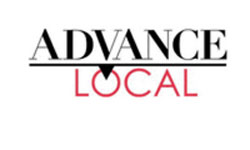Advance Publications’ much debated five-year-old strategy of discontinuing some days of daily print editions to devote added resources to digital is poised to achieve a critical crossover point in 2015: digital advertising gains will exceed print newspaper ad losses, the company claims.
In a bi-annual letter to employees today, Advance Local President Randy Siegel, writes:
Our local sales and marketing teams have leveraged their entrepreneurial abilities and expansive digital knowledge to prove they can grow digital ad revenue faster than we’re losing print ad revenue. In 2015, our local leadership teams plan to generate higher total ad revenue in every one of our markets, reversing a longstanding trend of decline.
I asked Siegel by e-mail whether he was including national advertising in that calculation, and he said yes. That would make for an even more noteworthy achievement since regional newspapers have typically been suffering deep losses in print national, in the range of 15 to 20 percent for the last several years.
The better digital sales and 2015 prospects mirror digital audience growth, said Siegel. The Advance Local sites have averaged 55 percent traffic gains year-to-year as measured by comScore, he wrote. Two of the more recent conversions to the company’s digital emphasis — Cleveland.com and SILive.com (Staten Island) — more than doubled their audiences year-to-year in November, he added.
Since Advance is privately-held by the Newhouse family, it does not disclose revenue and earnings figures in dollars, as is required of publicly-traded counterparts like Gannett or The New York Times Co. Generally the industry has been reporting progress year-to-year in plugging print ad shortfalls with digital ad growth, higher circulation revenues and other revenue streams like digital marketing services or events.
However based on results through three quarters, 2014 is expected to show total revenue at most companies and the entire industry down again — a significant negative to investors even at companies with a strong story of operating profit margins and innovation.
Other newspaper/digital companies may also be able to achieve revenue growth in 2015, though to my knowledge, Advance is first to make that promise.
There’s an important qualifier. Siegel’s letter makes no mention of circulation revenue. Advance’s main websites are all free — hence no digital subscriptions or print + digital revenue gains.
And with the lesser frequency of publication (or in some markets cuts in home delivery days), Advance doesn’t have the same leverage for print or bundled subscription price increases as most of the rest of the industry. So it did not benefit from the successive 5 percent industry increases in circulation revenue recorded in 2012 and 2013 (2014 totals are not yet available).
On the other hand, Advance has been clear about its strategic goals since it began revamping and emphasizing websites while reducing print at Ann Arbor and other Michigan properties in 2009. The bet was that digital ad revenues could grow from a small base, and that print declines were irreversible.
Advance has been proven right on both points. And in theory, it now has leaner operations well-positioned for growth into the future. More expense cuts are coming, Siegel’s letter says:
It’s clear we’re on the right path to building sustainable, thriving media organizations. But this journey will take a little longer and be a little harder than we originally anticipated, which is why we continue to need to recalibrate our expenses
The Advance way provoked a wave of protests from journalists and local readers when It cut frequency of the New Orleans Times Picayune and made NOLA.com its lead news product. The Advocate, based in Baton-Rouge has launched a daily New Orleans edition, and an old-fashioned newspaper war is in progress — with fresh shots being fired as the New Year begins.
The changes have now been introduced in all of Advance’s 25 markets. None drew the same level of resistance as in New Orleans, but journalists and some citizens in Cleveland and Portland have complained of mass dismissals of print veterans with a few hired back and others replaced by younger staffers on the expanded websites.
NOLA.com and the others Advance sites post frequent news updates in a blog-like format through the day, rarely holding stories for the print paper.
Few companies have followed Advance’s lead to date, but many industry analysts think print frequency cutbacks may be coming, especially if the strategy is a demonstrable financial success







